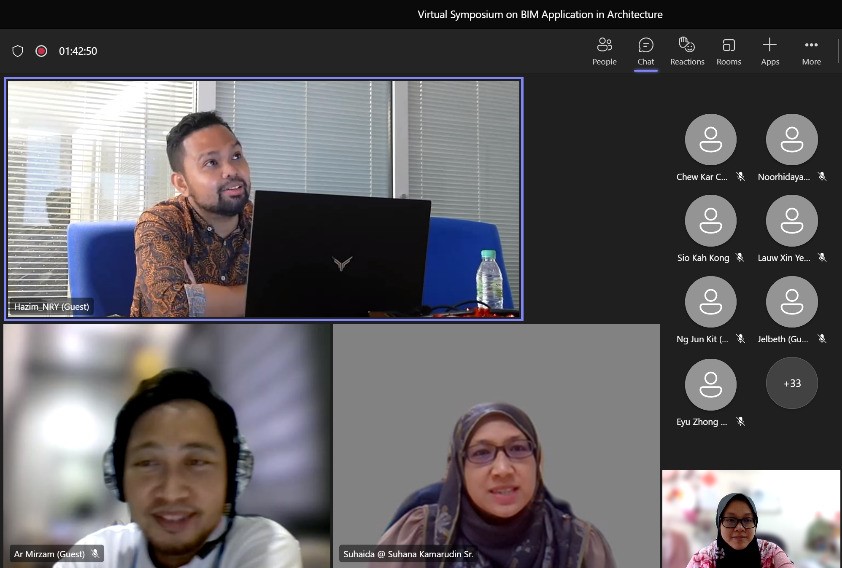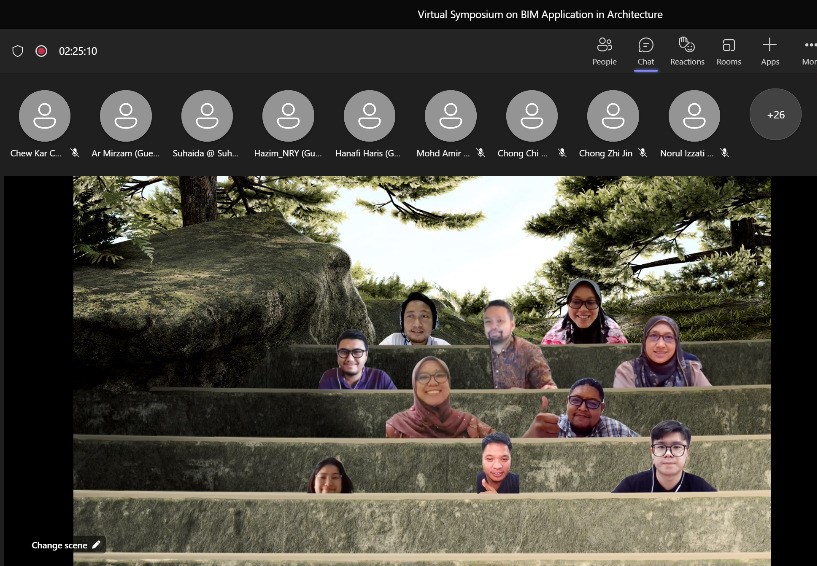By Rubendran Sathupathy
The Faculty of Engineering and Quantity Surveying (FEQS) at INTI International University organized the virtual symposium “Building Information Modeling (BIM) Applications in Architecture” on 5th October, aimed to explore how architects can use BIM in the design process to help them improve quality and accelerate design processes.
Speakers included Ar. Mirzam Taiman, Architect at Mirzam Taiman Architects, and Ts. Hazim Azami, BIM Manager/Architect at NRY Architects, and Suhaida @ Suhana Kamarudin, Senior Lecturer at FEQS, moderated the forum.

BIM is a visualization method in which architects can picture the entire concept of a project from 2D up to 7D and it can be applied not only from the design stage but also towards the completion of the project as well.
Previously, architects had to manually draw each step of the process when making changes. However, the implementation of BIM technology, such as AutoCAD, allowed them to easily collaborate and edit their designs.
Since the conference was about architecture, it focused on 2D and 3D drawings. The drawings involved three types of processes: concept, design, and documentation. An analysis is conducted between each step of the process.
The speakers shared their experiences with the application of BIM in their projects with the audience. For example, the way they did their visualization, coordination, and documentation.
They also demonstrated step-by-step process on how to design conceptual drawings using BIM based on their projects.

Questions regarding the resistance of projects towards the application of BIM, the cost implications for BIM, the difference in implementation in BIM as compared to the conventional project, and the change in time taken by architects in preparing designs between BIM and the traditional method.
The presenters explained that it is subject to the project type. Small-scale projects take a shorter amount of time and are less complicated compared to large-scale projects. Each of them may have different phases of construction with dissimilar requirements.
Members of the audience also gave their opinions about BIM. They reckoned that there is still a lack of BIM applications in construction.

The symposium was attended by around 40 participants, including FEQS students, lecturers, and external architects.
